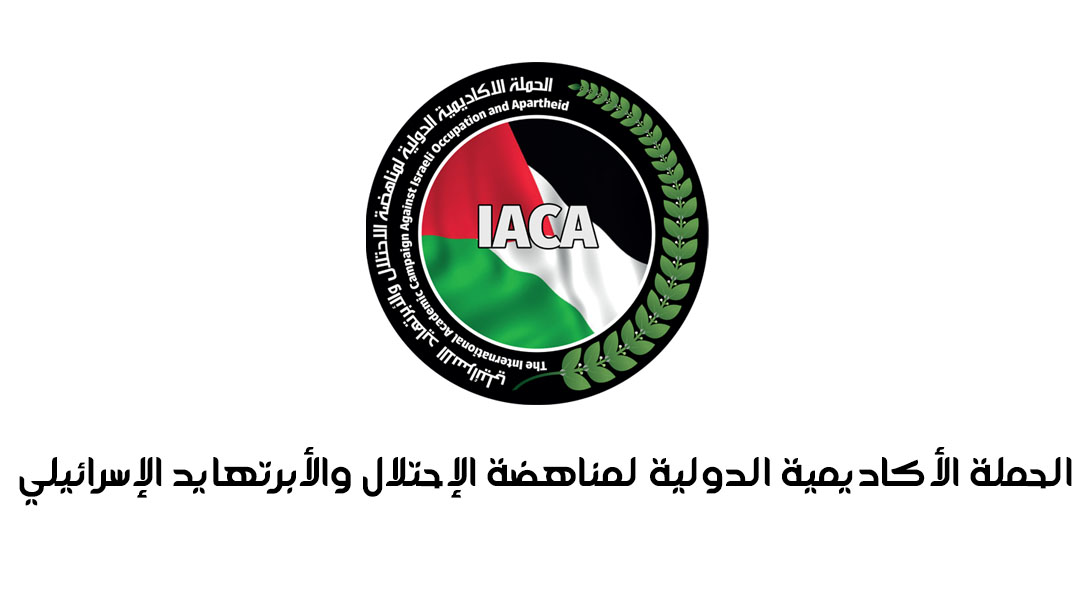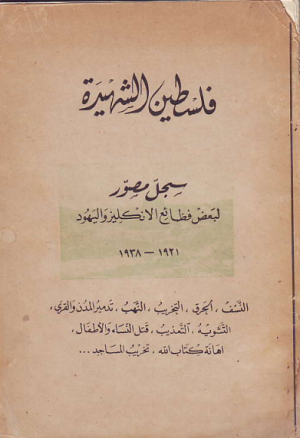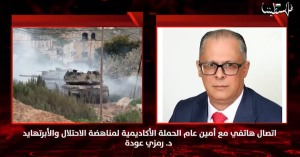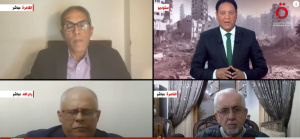Report: After the International Recognition of the Palestinian State, Israeli Apartheid is Directed to Undermine the Palestinian Authority Institutions
تم النشر بتاريخ 2024-09-18

The International Academic Campaign for Confronting Occupation and Israeli Apartheid published a report about the reality of Israeli apartheid in the occupied Palestinian territories in the two months of June and July. The researcher Ahmad Taqatqah, report author, stated that the occupying power has intensified its use of apartheid and oppression tools against the Palestinian people with the aim of undermining and weakening the institutions of the Palestinian National Authority, as well as distorting and eliminating the security institution in order to spread chaos and diminish the official and security institutions' ability to provide services to citizens. Israel's deliberate and systematic actions aim to undermine the Palestinian national project, which is represented by the declaration of the Palestinian state under the framework of the Palestine Liberation Organization. The report clarified that the occupying authorities have activated apartheid systems and programs following the recognition of the Palestinian state by some European countries such as Norway, Spain, Slovenia, and Ireland. In this context, the Israeli Cabinet approved the measures taken by Finance Minister Smotrich aimed to combat the recognition of the Palestinian state and to impose sanctions on the Palestinian National Authority, as well as enhancing settlement activities. Similarly, following the activities of the State of Palestine in the International Criminal Court and the International Court of Justice at the United Nations concerning holding Israel accountable for genocide crimes, and in response to the Palestinian diplomatic pressure for recognition of the Palestinian state by various countries, Israeli authorities have intensified a number of punitive racial measures. These racial measures include announcing their intention to seize 20,000 dunams of Palestinian land in the West Bank to advance settlement plans and recognizing five settlement outposts: Eviatar in northern West Bank, Sdei Ephraim – in Benjamin, Givat Asaf – in Benjamin, Shalitz – in Gush Etzion, and Adurim – in Mount Hebron.
The report included a description of the crimes committed by the Israeli occupation in the occupied Palestinian territories concerning the establishment of an apartheid system in the West Bank. This system involves treating Palestinians in a manner that diminishes their fundamental rights to security, employment, housing, movement, and other rights guaranteed by international legitimacy. In this context, the report indicated that the occupying authorities relied on three parallel political programs, all aimed at creating an apartheid system in the West Bank, as follows:
The First Aggressive Program: Using Excessive Force Against Palestinian Civilians
From October 7, 2023, to July 1, 2024, more than 579 Palestinians were martyred, including 140 children, in the West Bank and East Jerusalem. Additionally, 24 citizens were martyred at the hands of settler gangs. During the period covered by this report, 74 Palestinians, including 14 children, were martyred by the Israeli occupation authorities, while approximately 4,451 Palestinians were injured. Most of the injuries occurred during operations conducted by the occupying power in the cities of Jenin and Tulkarm and the surrounding refugee camps. Since October 7, the United Nations Office for the Coordination of Humanitarian Affairs has recorded 28 incidents involving airstrikes in the West Bank, which resulted in the martyrdom of 77 Palestinians, including 14 children. Settlers also carried out 23 attacks on Palestinians, resulting in 24 injuries, damage to property, and the displacement of Palestinian families.
The Second Aggressive Program: Expanding annexation and settlement plans through the following measures:
1. The policy of Judaization and land confiscation: The occupying authority in the areas classified as "C" has adopted a policy aimed at relocating the residents of these communities by creating unbearably difficult living conditions and restricting them to the point of desperation. This forces Palestinians to leave their homes as if they are doing so voluntarily. This is exactly what has occurred in areas such as Massafer Yatta, Khan al-Ahmar, and the Jordan Valley.
2. Restricting freedom of movement and constructing bypass roads: While Israeli settlers enjoy unrestricted freedom to move between various areas under Israeli control and have the right to leave and return to the country, Palestinian citizens must obtain special Israeli permits to move between their enclaves (and sometimes within the same enclave). Travel abroad is subject to Israeli security approval for Palestinians. Consequently, the occupying authorities have imposed restrictions on the movement of Palestinians in the occupied territories, which is a central tool used by Israel to enforce its system of occupation and apartheid. These restrictions include limiting Palestinian ability to move within the occupied territories themselves, traveling between the Gaza Strip and the West Bank, entering Israel, and traveling abroad. In this way, Israel restricts Palestinian movement, while settlers and other citizens—both Israeli and foreign—move freely.
The Third Aggressive Program: Settlers Measures and the repressive and Settlement Occupation Authorities in the West Bank:
The occupying authorities have instructed the army to protect the settlement outposts, and in some cases, they fund special protection for them, construct roads, and extend electricity and water networks to some outposts. Support is provided to settlement outposts through various channels, including government ministries, the settlement division of the World Zionist Organization, and the regional councils of settlers in the West Bank. Economic projects for settlers are given priority, including agricultural facilities, water allocations, and legal protection against eviction petitions. Additionally, the occupying army has armed more than half a million settlers in the West Bank and encouraged them to carry out organized attacks on Palestinian villages. During the reporting period, settlers conducted approximately 10 attacks in the West Bank. Meanwhile, 217 Palestinian families in East Jerusalem are facing eviction cases in Israeli courts, the majority of which are filed by settlement organizations, putting at least 968 individuals, including 424 children, at risk of displacement.
لتحميل الملف المرفق إضغط هنا
 الأكاديمية الدولية تدين القرار الأمريكي ضد الطالب الجامعي محمود خليل
الأكاديمية الدولية تدين القرار الأمريكي ضد الطالب الجامعي محمود خليل
 فلسطين الشهيرة - كتاب مصور لبعض فظائع الانجليز واليهود
فلسطين الشهيرة - كتاب مصور لبعض فظائع الانجليز واليهود
 المظاهرات داخل إسرائيل تشكل ضغطا على حكومة نتنياهو
المظاهرات داخل إسرائيل تشكل ضغطا على حكومة نتنياهو
 كلما زادت إسرائيل من جرائمها كل ما استمر التصعيد في كل المنطقة العربية
كلما زادت إسرائيل من جرائمها كل ما استمر التصعيد في كل المنطقة العربية
 تقطيع أوصال الضفة والعدوان على المخيمات
تقطيع أوصال الضفة والعدوان على المخيمات
 الاستهدافات الإسرائيلية في غزة تستوجب تحركًا دوليًا عاجلًا
الاستهدافات الإسرائيلية في غزة تستوجب تحركًا دوليًا عاجلًا
 كيف نجمع الرأي الدولي وكيف تعمل المنظمات الدولية وتقوم بدورها لوقف الحرب على قطاع غزة ؟
كيف نجمع الرأي الدولي وكيف تعمل المنظمات الدولية وتقوم بدورها لوقف الحرب على قطاع غزة ؟
 المفاوضات القادمة بين حماس وإسرائيل في غزة ستكون على غرار “كامب ديفيد”
المفاوضات القادمة بين حماس وإسرائيل في غزة ستكون على غرار “كامب ديفيد”
 انخفاض تأييد الاحـ ـتلال في الشارع الأمريكي بعد 7 أكتوبر
انخفاض تأييد الاحـ ـتلال في الشارع الأمريكي بعد 7 أكتوبر
 مفاوضات أمريكا مع حماس تمثل اعترافًا بها وتثير استياء تل أبيب
مفاوضات أمريكا مع حماس تمثل اعترافًا بها وتثير استياء تل أبيب